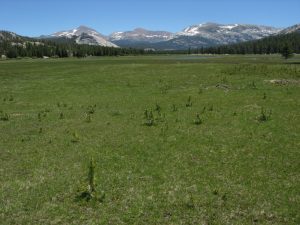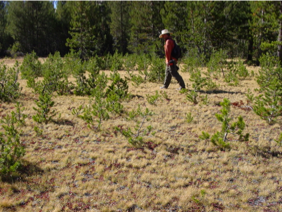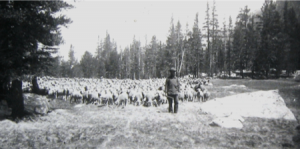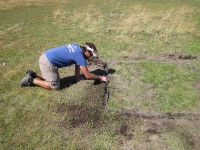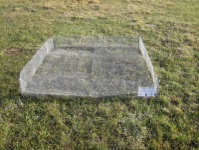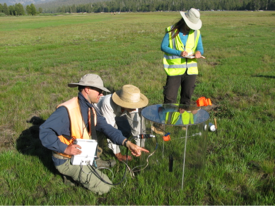Tuolumne Meadow is famous for its view of the Sierra Nevada, and is one of the largest meadows in the central and southern Sierra. However the meadow has been experiencing conifer encroachment that threatens the very existence of the meadow, which by definition is mostly treeless. Many people have suggested that the cause of meadow invasion is hydrologic changes to the meadow by the Tioga Pass Road. We assembled an interdisciplinary team of hydrologists, and ecologists to test this hypothesis. We found that there was no support for this hypothesis (see attached report). Ground water from the upland hillslopes flows unmodified under the highway in most areas, and ground water is also recharged by the Tuolumne River in many areas. The main cause of tree invasion into the meadow is the poor condition of the vegetation, which has not recovered from mid to late 19th century sheep grazing. The bare ground facilitates conifer establishment.
TuolumneMeadowsFINALreport2006
Currently graduate student Evan Wolf is (photo above) is working on this problem for his dissertation. This work involves calculating carbon budgets for the meadow using static chamber techniques (left photo) to determine if the meadow’s highly organic soils are being lost. It also involves a factorial experiment to evaluate whether small mammal herbivory is targeting native clonal plants such as Carex scopulorum which should dominate the wetter portions of the meadow, but is virtually absent. We are using above ground and below ground exclosures to eliminate certain small mammals, and will be planting Carex seedlings into the exclosures and control plots without fences to follow the establishment and survival of plantings. The goal is to understand the factors limiting the reestablishment of native clonal plants into Tuolumne, and use these analyses to develop suggested restoration alternatives for national park staff.
